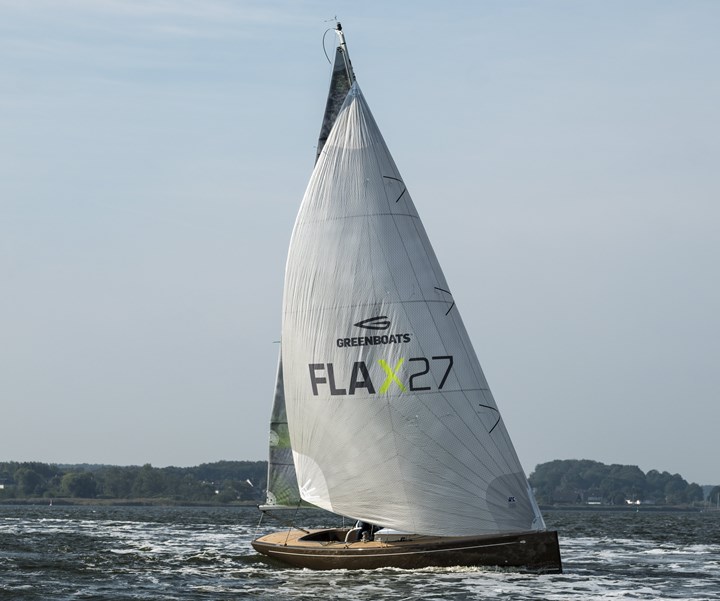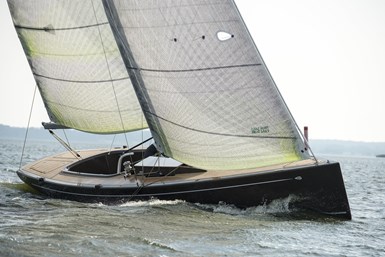Sicomin bio-based resins used in flax fiber-reinforced boat
The hull, deck and internal structure the FLAX 27 sailing boat were infused with Sicomin’s GreenPoxy InfuGreen 810 resin and flax fiber reinforcement fabrics.

Source | Sicomin
Epoxy specialist Sicomin (Marseille, France) has partnered with marine natural fiber composites manufacturer GREENBOATS (Bremen, Germany) on the supply of GreenPoxy bio-based resins for GREENBOATS’ FLAX 27 daysailer boat — the most complete natural fiber composite project the company has realized to date. In addition, Sicomin says its hand lamination and infusion production processes have been optimized for natural fiber composites.
GREENBOATS, which has been producing natural fiber composites for marine and industrial applications at its Bremen facility for more than a decade, says its mission is to use 100% renewable and sustainable raw materials in its sandwich composite structures.

Source | Sicomin
The FLAX 27 is an 8.2-meter classically styled daysailer designed by naval architects Judel/Vrolijk & Co. The hull, deck and internal structure of the vessel were infused with Sicomin’s very low viscosity GreenPoxy InfuGreen 810 resin and flax fiber reinforcement fabrics. Vacuum infusion combined with Sicomin’s resin produced clear natural fiber laminates said to have outstanding mechanical properties. Available with a choice of hardeners to adjust the curing time as required, InfuGreen 810 also carries DNV-GL approval.
The companies plan to continue working together in 2020.
“Our goal is to really get people excited about natural fiber composites. Sicomin’s GreenPoxy products help us create sustainable composites with no compromise in performance or appearance,” says Friedrich Johann Deimann, GREENBOATS founder.
Related Content
-
Plant tour: Joby Aviation, Marina, Calif., U.S.
As the advanced air mobility market begins to take shape, market leader Joby Aviation works to industrialize composites manufacturing for its first-generation, composites-intensive, all-electric air taxi.
-
Recycling end-of-life composite parts: New methods, markets
From infrastructure solutions to consumer products, Polish recycler Anmet and Netherlands-based researchers are developing new methods for repurposing wind turbine blades and other composite parts.
-
Plant tour: Albany Engineered Composites, Rochester, N.H., U.S.
Efficient, high-quality, well-controlled composites manufacturing at volume is the mantra for this 3D weaving specialist.

.jpg;width=70;height=70;mode=crop)













